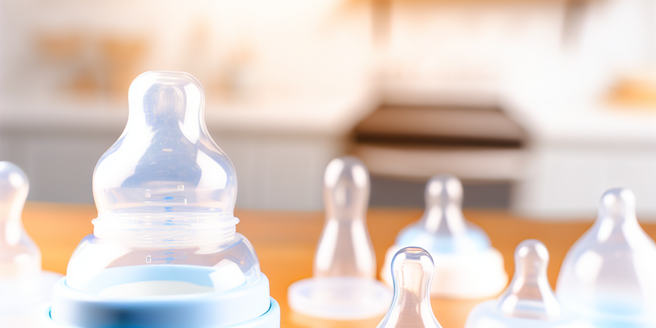
Choosing the Right Bottle and Nipple
When selecting a bottle and nipple for your baby, consider factors like material, flow rate, and shape. Bottles can be made from glass, plastic, or silicone, and each has its pros and cons. For instance, glass is durable and easy to clean but can be heavy, while plastic is lightweight but may need replacing more often. Nipples come in different shapes, flows, and materials. Newborns typically prefer a slow flow, and as they grow, you can transition to faster flows. Consider your baby’s comfort and any potential allergies when choosing the nipple material, such as latex or silicone. Pay attention to your baby’s preferences, as each infant may have unique needs in terms of the bottle and nipple they prefer.
Preparing the Formula Safely
Proper preparation of formula milk is crucial for your baby’s health. Always wash your hands before handling formula and use clean utensils and bottles. Follow the manufacturer’s instructions precisely, including water-to-formula ratio. Use boiled and cooled water to ensure safety and avoid infections. Measure ingredients accurately to maintain the correct nutritional balance. Mixing formula at the right temperature is vital; too hot can destroy nutrients, while too cold may not dissolve properly. After preparing, store any unused formula in the fridge, and discard it if not used within 24 hours. Ensuring formula safety can prevent illnesses and provide your baby with the nutrition they need for healthy growth.
Proper Feeding Positions for Comfort
Finding the right feeding position can greatly enhance comfort for both you and your baby. A popular choice is the cradle hold, where you place your baby in the crook of your arm, allowing you to have better control. Ensure their head is elevated higher than the tummy to prevent milk from running down the throat too quickly. You can also try the cross-cradle hold or the football hold for support. Always maintain comfortable eye contact and talk to your baby during feeding, which helps strengthen your bond. Adjust your supports, such as pillows, to maintain this position without straining your back or arms.
Recognizing Baby’s Hunger Cues
Understanding your baby’s hunger cues is essential for optimal feeding. Babies often show signs like sucking on hands, turning their head toward the breast or bottle, and making sucking noises or opening their mouth. Crying is a late hunger cue and can make latching more difficult, so try to feed your baby before this stage. Keep an eye on their body language; active alertness can indicate readiness to eat. Responding promptly to these cues not only helps avoid distress for your baby but also fosters a sense of trust and security. Mastering these signals helps support your baby’s healthy development.
Burping Techniques and Tips
Effective burping techniques are crucial for your baby’s comfort. Burping eliminates swallowed air, reducing gas and fussiness. One common method is the over-the-shoulder burping technique, where you hold your baby upright against your shoulder and gently rub or pat their back. Alternatively, you can try sitting your baby on your lap, supporting their chest and head with one hand while patting their back with the other. Another method is laying them tummy-down across your lap. Each baby is different, so you may need to try various techniques to find what works best. Regular burping after feeding sessions contributes to a more comfortable experience for your baby.
Cleaning and Sterilizing Bottles
Cleaning and sterilizing bottles is an essential step in preventing infections and maintaining your baby’s health. Begin by washing your hands thoroughly. Rinse the bottles in hot soapy water immediately after feeding to remove any milk residues. Use a bottle brush to scrub the inside of the bottle and nipples. Rinse thoroughly to remove soap traces. For sterilization, use a steam sterilizer, boiling method, or a solution designed specifically for baby bottles. After sterilizing, let bottles air dry on a clean towel. Keeping feeding equipment sterile reduces the risk of bacteria buildup, thus protecting your baby from potential infections and illnesses.
